
Ford Puma Review 2023

Introduction
Well, thousands of lease customers and car buyers can’t all be wrong, can they?
The Ford Puma is poised to be the most popular car in the UK, full stop. It currently sits at the top of the list for most registered motors in Britain, according to industry stattos at the Society of Motor Manufacturers and Traders (SMMT), and it has dominated monthly charts all year.
If the trend continues, the Puma will knock the Nissan Qashqai off its perch as 2023’s best-seller. And it also means the Puma will radically improve its fourth-placed position of last year.
That’s some feat for the Ford hatchback-SUV, as the compact crossover market is among the most competitive in the leasing world, with scores of rivals including the Nissan Juke, Volkswagen T-Cross, and the Peugeot 2008 to choose from.
Why is the Puma positively purring? It simply ticks all the right boxes, particularly when it comes to affordability, practicality and style.
Better yet, there’s also the adrenaline-inducing ‘ST’ model… which is the one we got to drive.
Select's rating score* - 4.3 / 5
At a Glance
The Puma is due to be facelifted in 2024, but it’s still a good-looking car in its current form, with those bug eyes and feline-like rear haunches.
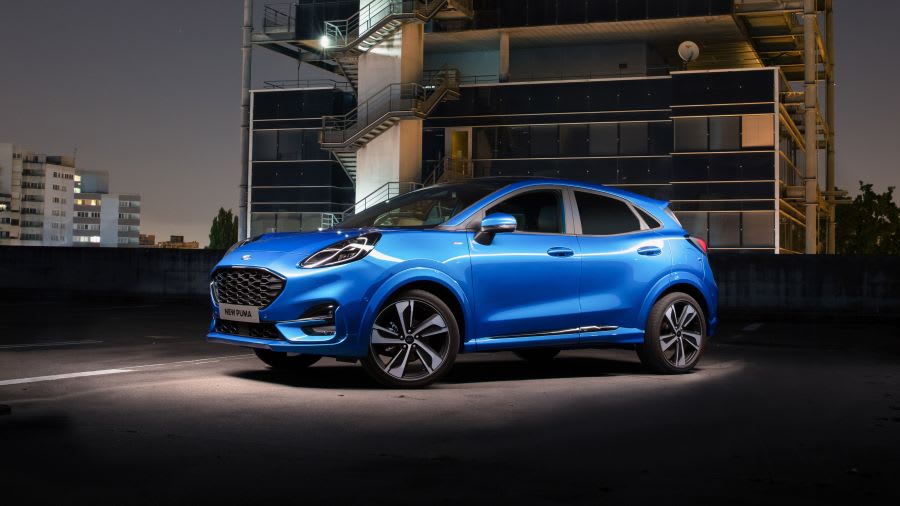
It looks even better in performance ST trim - the version we tested - which goes like the proverbial scalded big cat.
Elsewhere, you’ll find petrol powertrains supported by mild-hybrid tech for better fuel economy and lower CO2 emissions. And even the most affordable variants have decent power of 125 PS and should put a smile on your face during the school run.
The cabin is typically Ford - well put together, intuitive, and plush enough to make you believe you’re sitting in something much more upmarket.
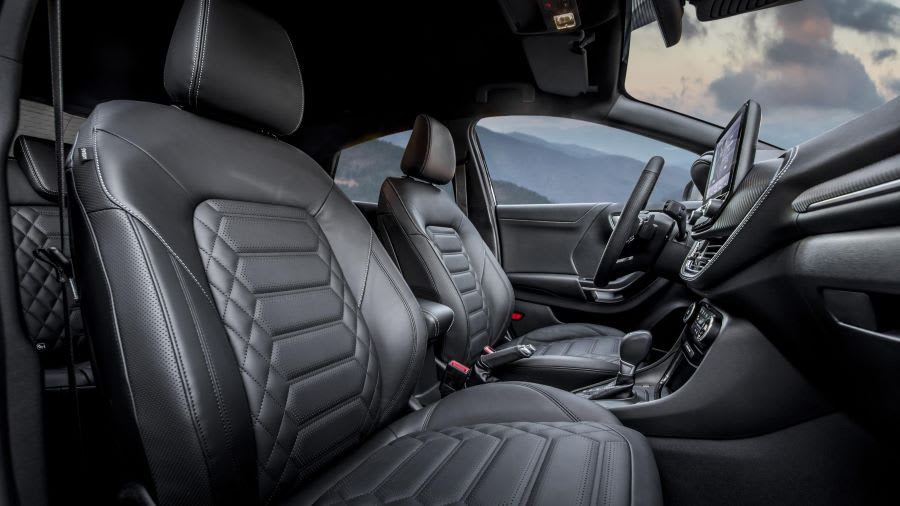
The most affordable Pumas to lease here at Select are actually the second-rung ‘ST-Line’ models, which come with 17-inch alloys, an ST-Line body kit, sport suspension, rear parking sensors, a fully-connected 8-inch touchscreen, and safety aids like Lane Keeping.
A whopping-great 456-litre boot also sets the Puma apart from competitors, while the ‘Mega Box’ - a waterproof stowage compartment hidden underneath the boot floor - is a welcome addition if you’re constantly lugging around muddy football boots or wet dog leads.
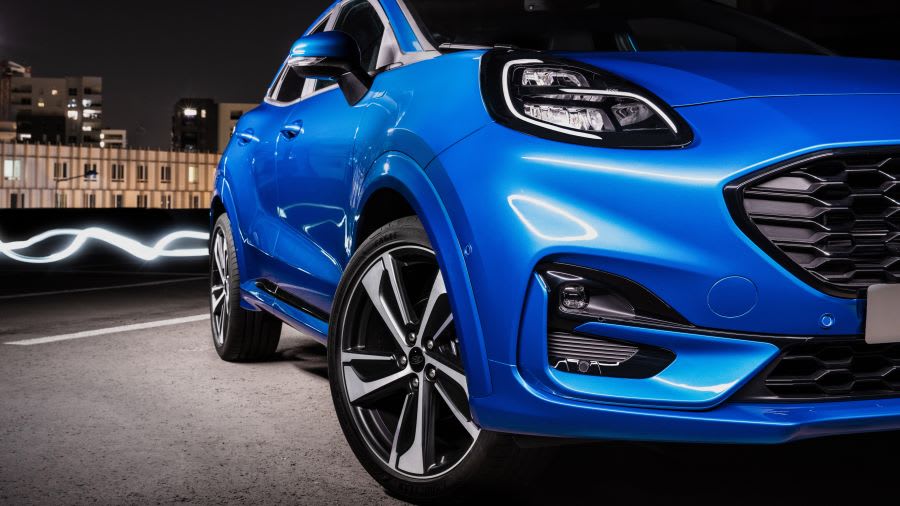
Key Features
We’ve covered a lot of the Puma’s key features in the section above, but it’s worth pointing out that there are currently six trims.
They begin at Titanium and run through ST-Line, ST-Line X, Vivid Ruby Edition, ST-Line Vignale, and then the range-topping, hot ST.
All models get the ‘Mega Box’ boot compartment and you can also expect Pre-Collision Assist with Autonomous Emergency Braking, Pedestrian/Cyclist Detection and Post-Collision Braking as standard across the range.
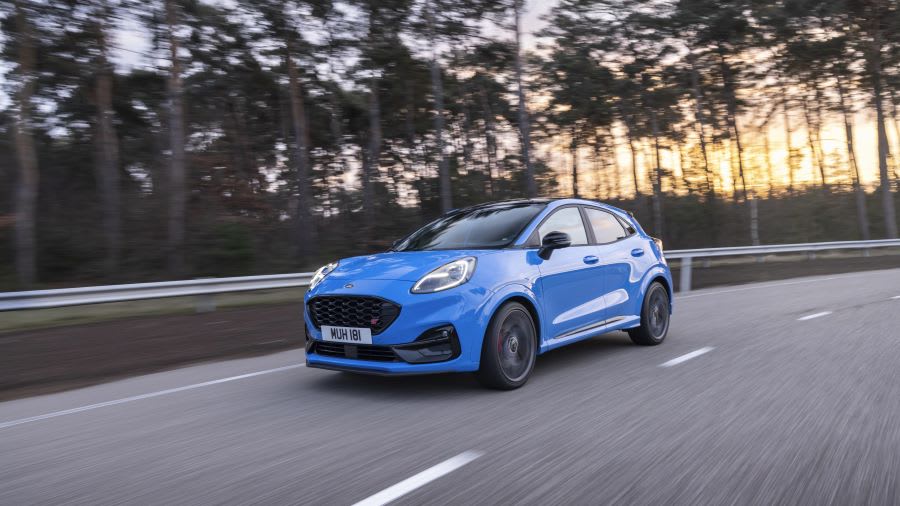
Larger 18-inch alloys, as well as wireless gadget charging, begin at ST-Line X. The Vivid Ruby Edition is, erm, vivid ruby in colour.
Meanwhile the all-singing, all-dancing Ford Puma ST can be enjoyed with power of either 200 PS or 170 PS - with the lesser-powered ST being a mild-hybrid.
There’s no fully-electric Puma just yet - though rumour has it that we’ll get one in 2024. For a battery-powered compact crossover you’ll have to look at the likes of the Kia Niro EV or the Volkswagen ID.3.
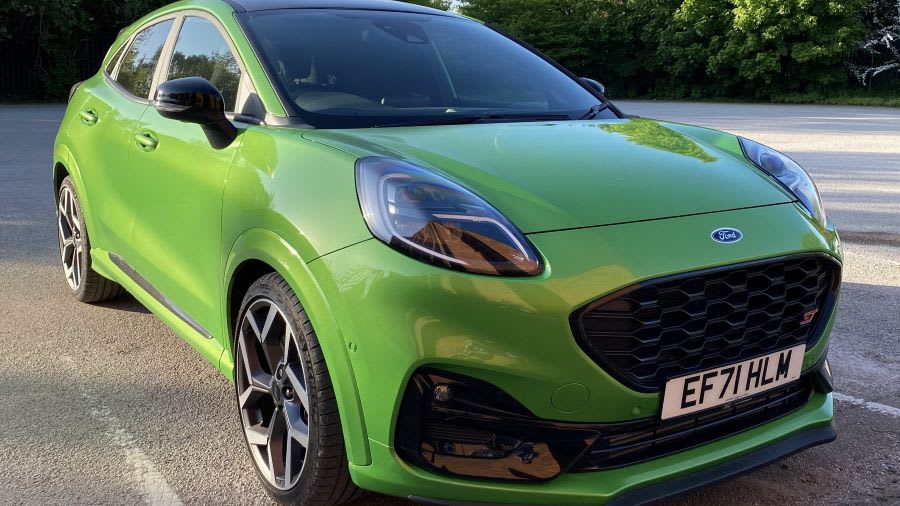
Performance & Drive
We were handed the keys to the Puma ST by Ford - so let’s start there.
First thing’s first, we need to talk about the paint. The colour you see here is ‘Mean Green’. And we absolutely love it. The bad news is that Ford has now withdrawn this particular hue, so you’re left with a mix of red, blue, white, grey and black.
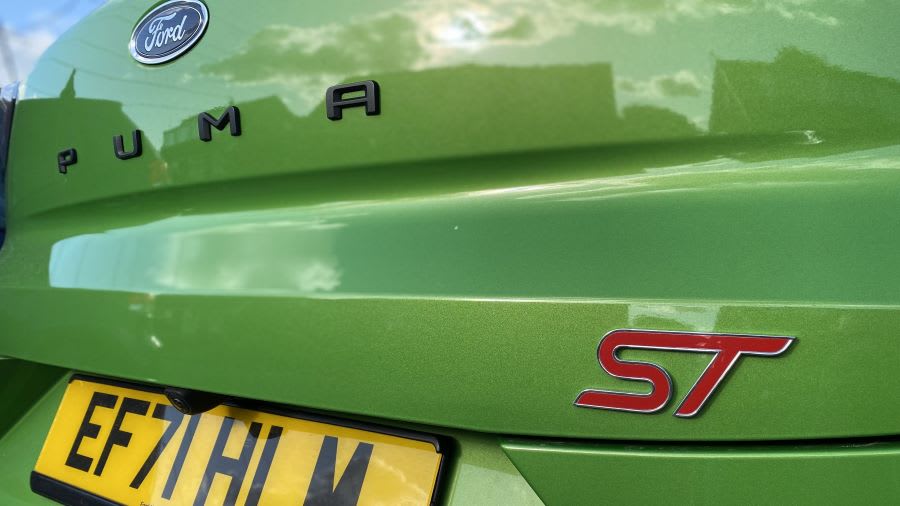
As we mentioned above, the Puma ST is up for grabs with two power outputs. The traditional 1.5 litre petrol has the most shove, at 200 PS, while a slightly more frugal mild-hybrid ST gets 170 PS. Neither is what you’d call slow, with the 170 PS Puma ST hitting 62 mph in 7.4 seconds and the 200 PS Puma ST doing the same in just 6.7 seconds.
How does that stack up against the other Ford benchmark, the Fiesta ST hot hatch? Pretty well, actually, with the larger Puma ST taking just 0.2 of a second longer to sprint from 0-62 mph.
The Puma ST we enjoyed also came with the optional ‘Performance Pack’. You can add it to your lease for an extra £15 per month, give or take. This unlocks a Mechanical Limited Slip Differential (LSD) from specialists Quaife, as well as a Performance Shift Light and Shift Indicator.
If you plan to take the Puma ST anywhere near a track, it’s a handy option to have, but you can probably do without it if you’re just turning heads on the streets.
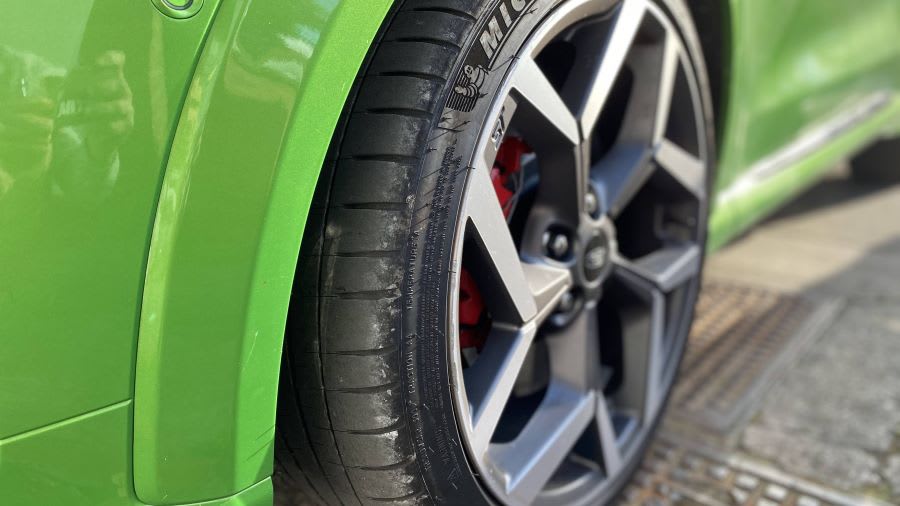
Either way, the Puma ST is a joy to drive. It’s taut, you point and it squirts, the bucket seats and headrests cosset you like you’re being bear-hugged by a wrestler, and the flat-bottomed steering wheel is a delight.
The exhaust note emitting from the twin pipes at the back will have you smirking - particularly if you were to select ‘Track’ mode, which sharpens the throttle response and noise while turning the dashboard all shades of red and orange. There’s also an engine sound enhancer to arouse your ears.
We can’t even imagine the super-sharp ‘ST Suspension’ ever being bent out of shape, but it doesn’t always play nicely with potholes, causing some shudder and shake.
If that doesn’t sound like fun during everyday driving, a less potent Puma with a more pliable suspension set up might be best for you.
Speaking of which, power for the common-or-garden Puma is either 125 PS or 155 PS, depending on which version you choose. And that’s courtesy of Ford’s fabulous, tried-and-trusted 1.0 EcoBoost engine, which is about as good as it gets from any manufacturer.
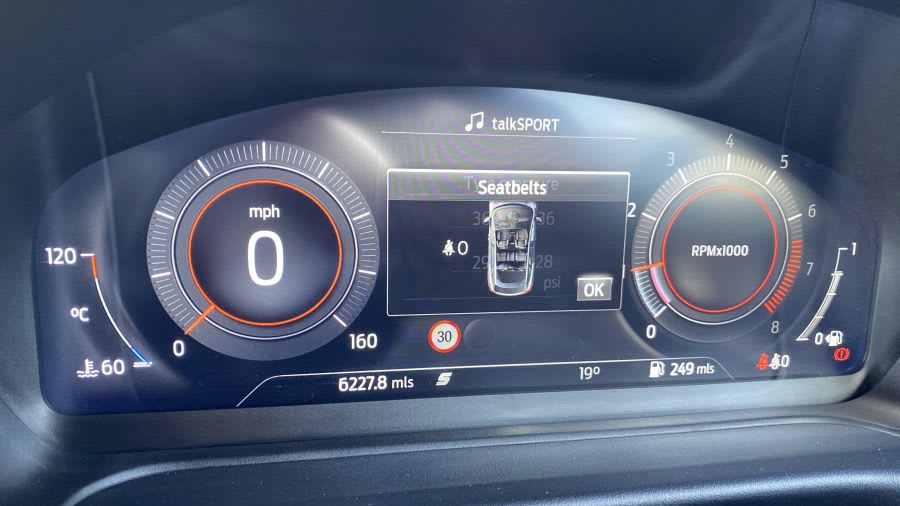
Running Costs & Emissions
Leasing a Ford Puma won’t break the bank, no matter which of the kitties you decide to make your pet.
The 125 PS, entry-level mild-hybrid powertrain will return a stated 52.3 miles to the gallon, while the 155 PS version will return around 50 mpg.
For the added get-up-and-go, and factoring-in the slight difference in fuel economy, we’d probably plump for the 155 PS set-up.
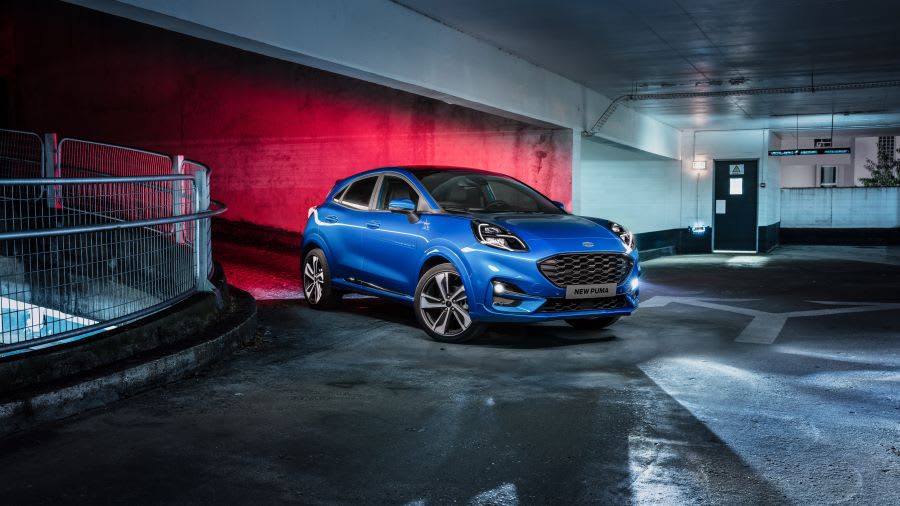
You can expect emissions of around 125 g/km with the regular Puma, while that figure jumps to 151 g/km with the Puma ST fitted with the Performance Pack.
Those emissions are less than the equivalent Nissan Juke, which produces a shade more CO2, and will help to lower your tax bill if you’re a company car lease customer.
But where the Juke trumps the Puma is the option of a self-charging hybrid powertrain - which reduces the Juke’s emissions to around 113 g/km.
Hopefully the upcoming Ford Puma facelift will cure that.
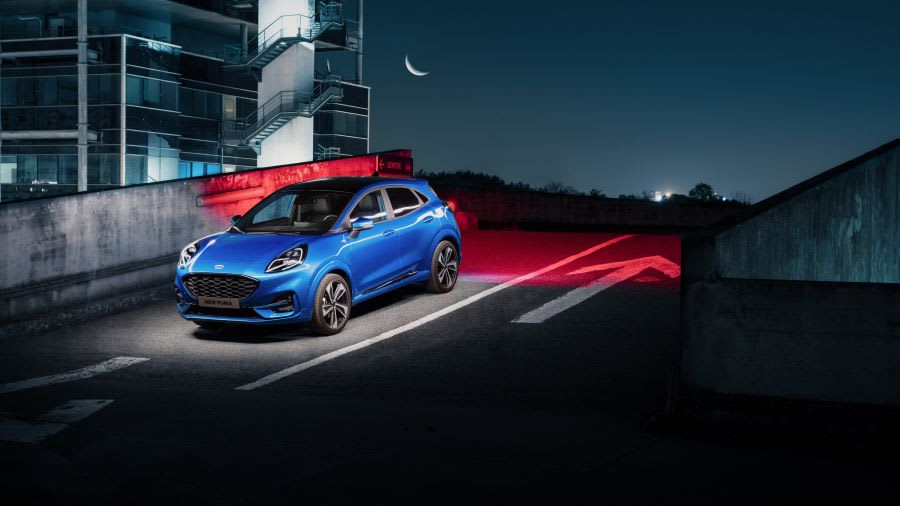
Interior & Technology
One word - ‘impressive’. And that’s particularly so with the Ford Puma ST we sat inside.
The ST benefits from a wireless phone charging, parking sensors all round, an 8-inch infotainment touchscreen and a particularly decent 12.3-inch digital driver’s display.
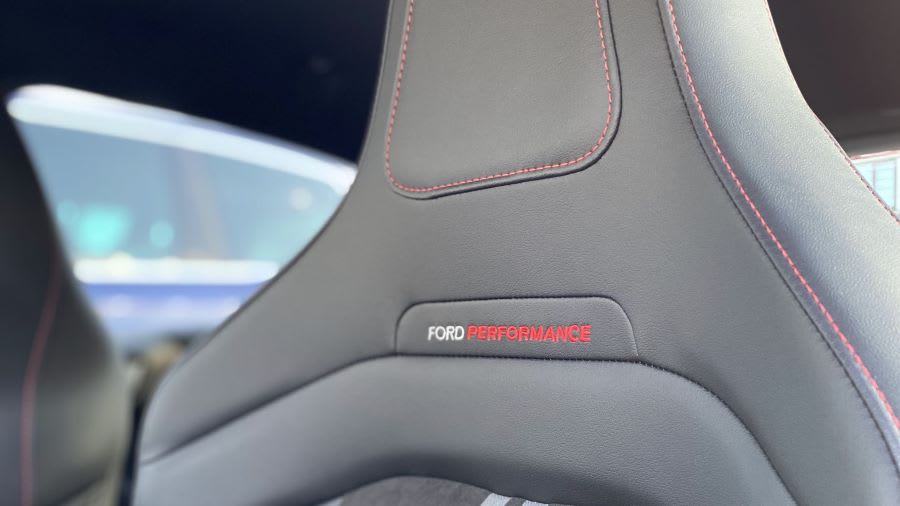
It’s all intuitive to use, there’s an abundance of soft-touch finishes, and there are enough physical buttons - as opposed to fiddly digital sliders - to take the faff out of whacking on your tunes. A 10-speaker B&O premium sound system helps improve that experience, too.
While the ST is clearly a cut above in the range, the interior of the Puma’s lower down the family tree are roughly on a par, and you’ll not want for creature comforts.
In short, the Puma is an exceedingly pleasant space in which to park your posterior.
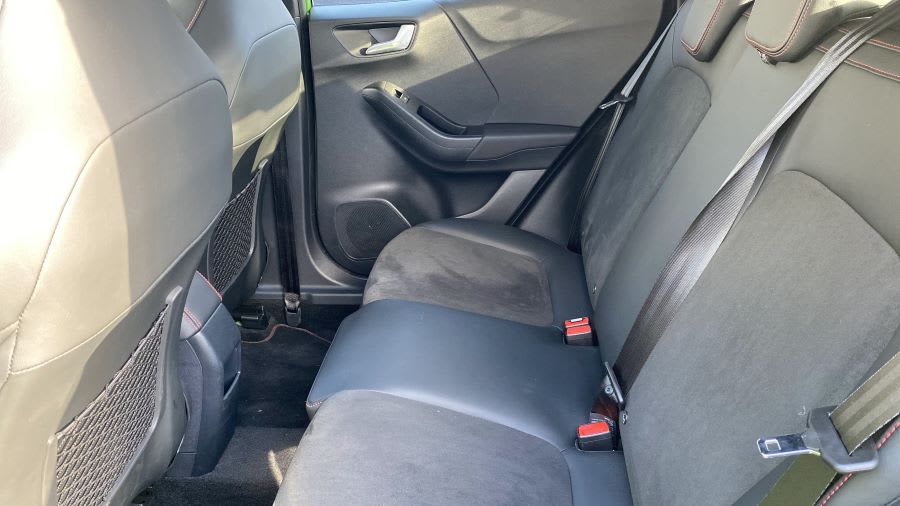
Space & Practicality
We’ll let the figures do the talking here. Here’s a run-down of the luggage capacity on offer in some of the Puma’s rivals; Nissan Juke - 422 litres. Peugeot 2008 - 434 litres. VW T-Cross - 385 litres.
And the Puma? 456 litres. It’s not loads more than the nearly-rans, but significant enough to be a selling point.
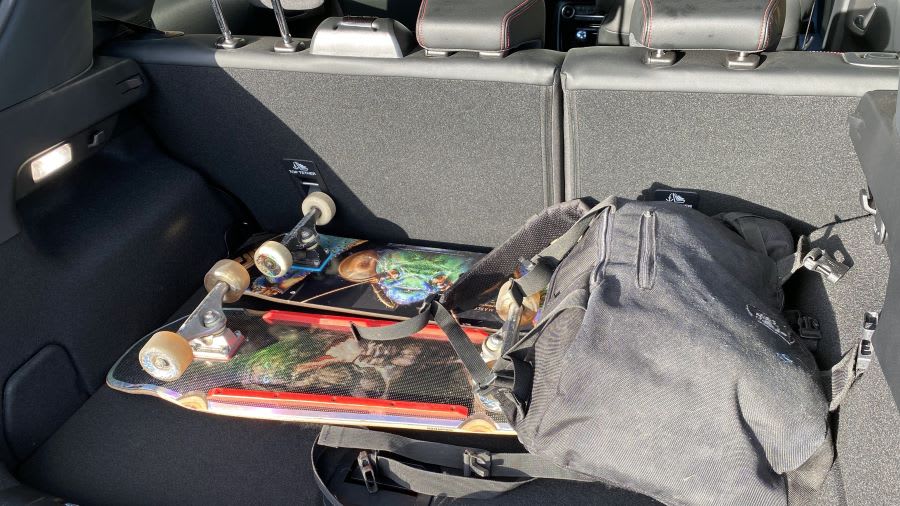
Again, as we mentioned earlier, the Puma also comes - as standard - with the magnificent-sounding ‘Mega Box’, which hides under the boot floor and lets you stash anything that’s crud-encrusted or sopping wet without ruining whatever else you’re trying to carry.
Legroom in the rear is ample for passengers and it’s a space that never felt cramped during our test.
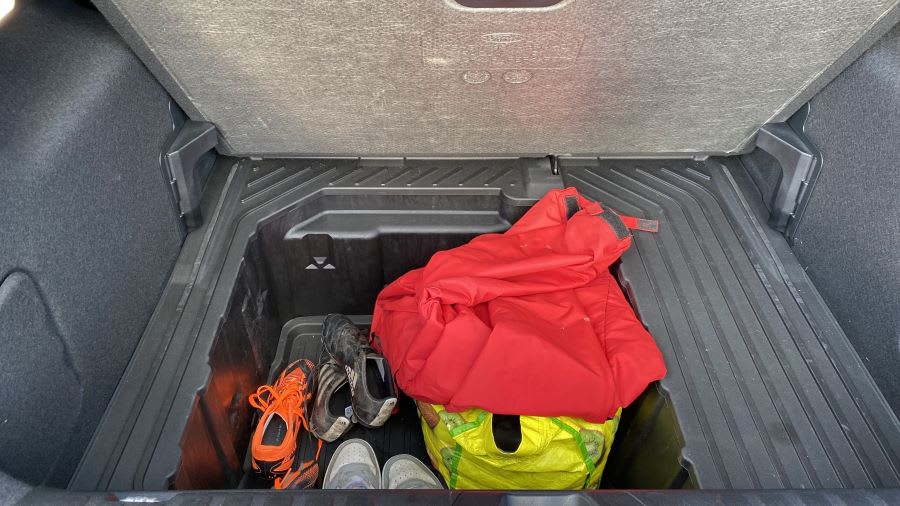
Safety
The Ford Puma was awarded the maximum five stars by industry safety assessors Euro NCAP back in 2019, but this was subsequently downgraded to four stars in 2022 as the test got much tougher.
Still, there’s little to worry about on the safety front, as all Pumas come as standard with lane keeping aid with lane departure warning, cruise control with intelligent speed assist, autonomous emergency braking, and pedestrian/cyclist detection with post-collision braking.
The Ford Puma ST also improves on the package as a whole, coming with more powerful brakes as well as the traction-boosting slip diff.
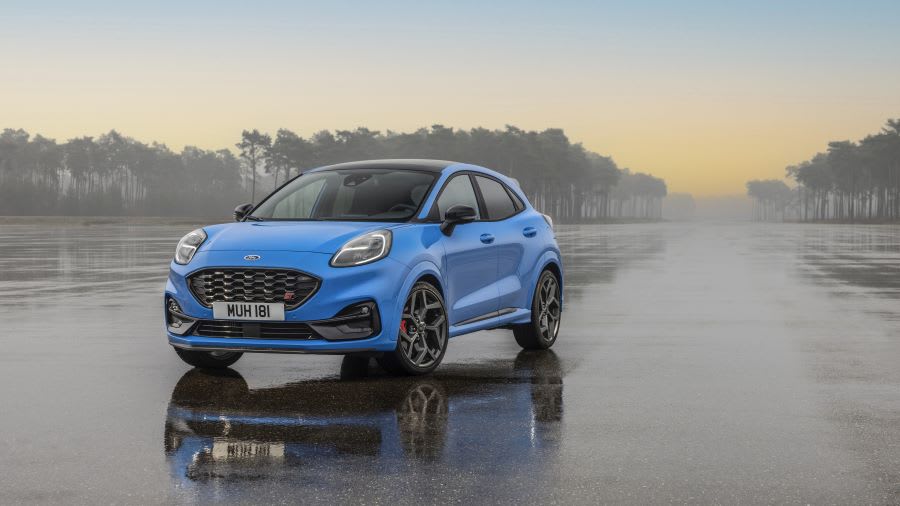
Options
Choosing the right pack for you is a doddle with the Puma.
With the entry-level Titanium Puma, you can add the ‘Parking Pack’ for an extra tenner a month, which gives you a rear view camera and active park assist.
The Driver Assistance Pack might be a decent box to tick, as it brings you Intelligent Adaptive cruise control with evasive steering, among other things, to improve safety and comfort, particularly if you cover a lot of motorway miles.
An opening panoramic sunroof will add around £20 to your monthly lease fee. And you can also add large 19-inch alloys to your package if you wanted to.
To explore all of the options, remember to click on the grey ‘Choose Colour, Trim and Options’ button where you see a Select Car Leasing deal.
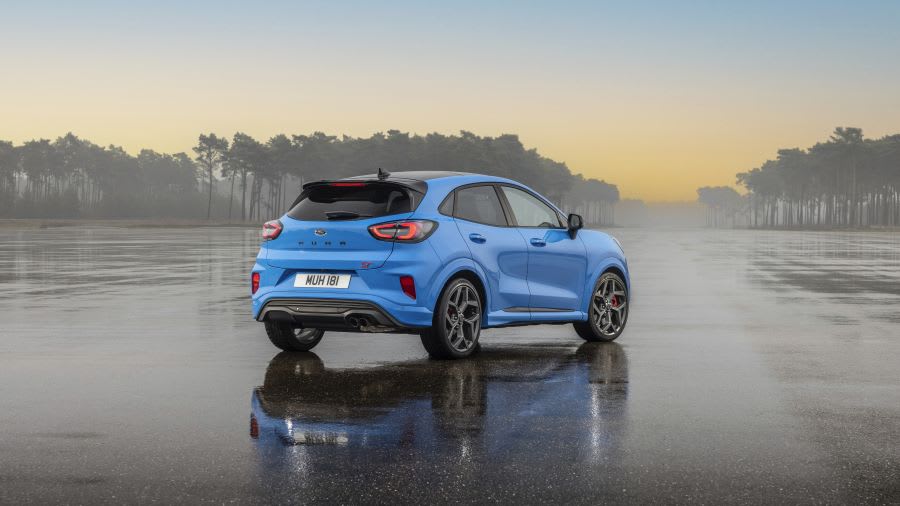
Rival Cars
There’s no shortage of competitors jostling for superiority in the compact crossover leasing market, and the Puma does battle with a few key rivals.
The Nissan Juke is, pound for pound, one of the main challengers, coming with quirky exterior styling and a similar 1.0 litre petrol engine as standard.
The standard Juke, however, has less power than the entry-level Puma and there’s certainly no performance model. The Juke does have the option of a self-charging hybrid powertrain, though.
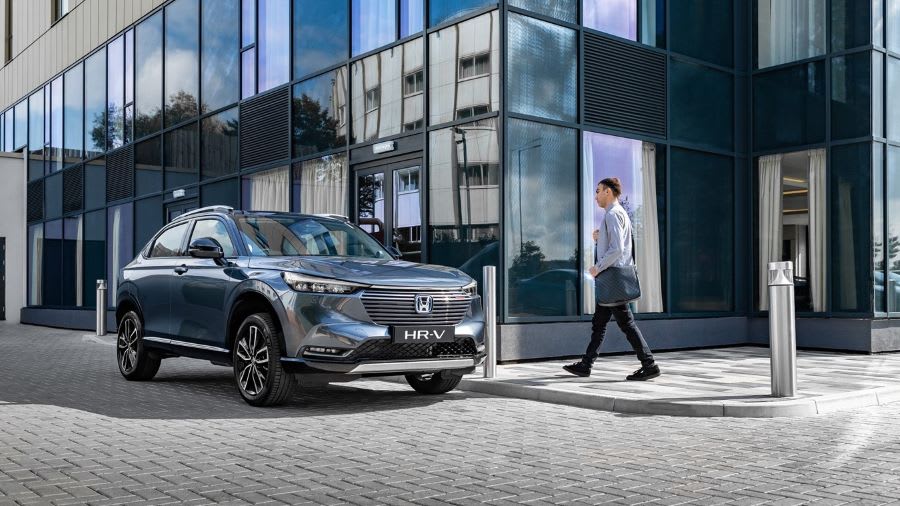
In fact, you’ll find many other hybrid crossovers to compete with the Puma, including the Toyota Yaris Cross and the Honda HR-V (above).
One alternative you shouldn’t overlook is the CUPRA Formentor, particularly if you’re looking at the Puma ST.
The Cupra is slightly larger and has power of up to 310 PS, which is plenty more than the fastest Puma.
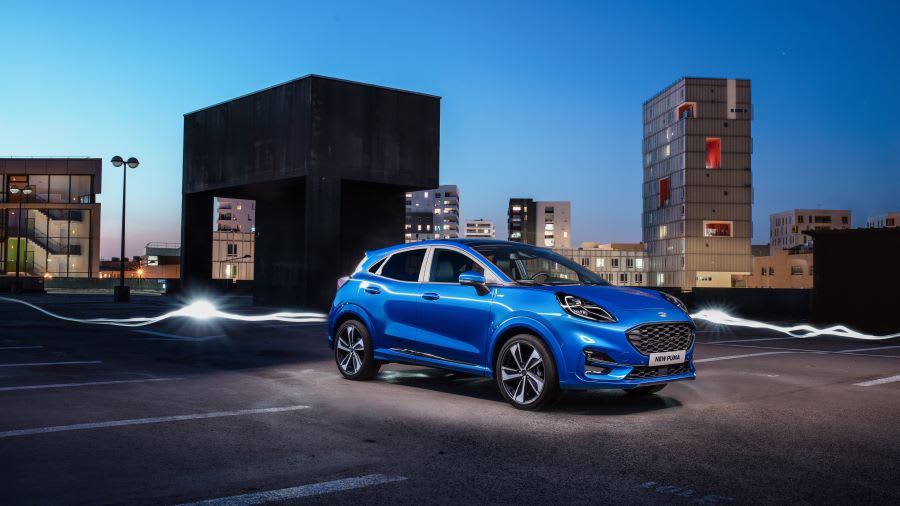
Verdict & Next Steps
There’s a reason the great British public has fallen in love with the Puma, and it’s all down to the fact that it does a very good job at lots of different tasks.
Need something to ferry the sprogs to school but which is also never dull? The Ford Puma always has the capacity to surprise.
Want enough room in the back, but don’t quite need a big and bulky SUV? The Puma’s svelte, almost coupe-like proportions still make for a spacious cabin.
We’d even go so far as to say the Puma looks better than lots of other, more premium Fords in the company’s line-up, including the electric Mustang Mach-E.
The long-running Fiesta hatchback is currently enjoying its last knockings as Ford has put it out to pasture.
But will we really miss the Fiesta when the Puma has so much going for it?
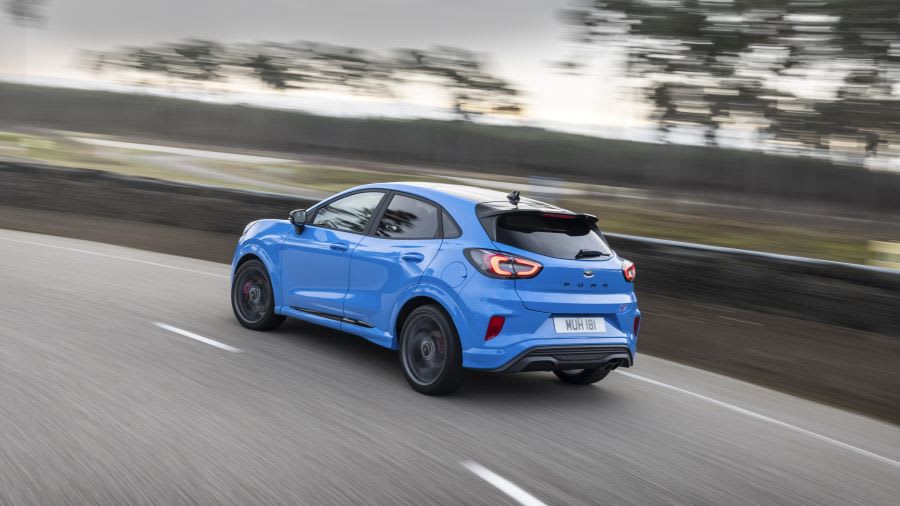
Where to next?
View latest Ford Puma Leasing deals- from just £250 per month inc VAT**.
Call us on 0118 3048 688 or hit the green 'Enquire' button for more details.
Looking for a great leasing deal? Check out our incredible range of car lease deals.
New Hatchback? Read our latest Car Reviews and find the right model for you.
Want to know more about leasing? Take a look at our comprehensive Leasing Guides.
Interested in everything motoring? Why not catch up on all the latest Car Leasing News.
**Score based on Select’s unique meta score analysis, taking into account the UK’s top leading independent car website reviews of the Ford Puma.
**Correct as of 17/10/2023. Based on 9 months initial payment, 5,000 miles annually over a 48 month lease. Initial payment equivalent to 9 monthly payments or £2,251.17 (Plus admin fee) Ts and Cs apply. Credit is subject to status.




















